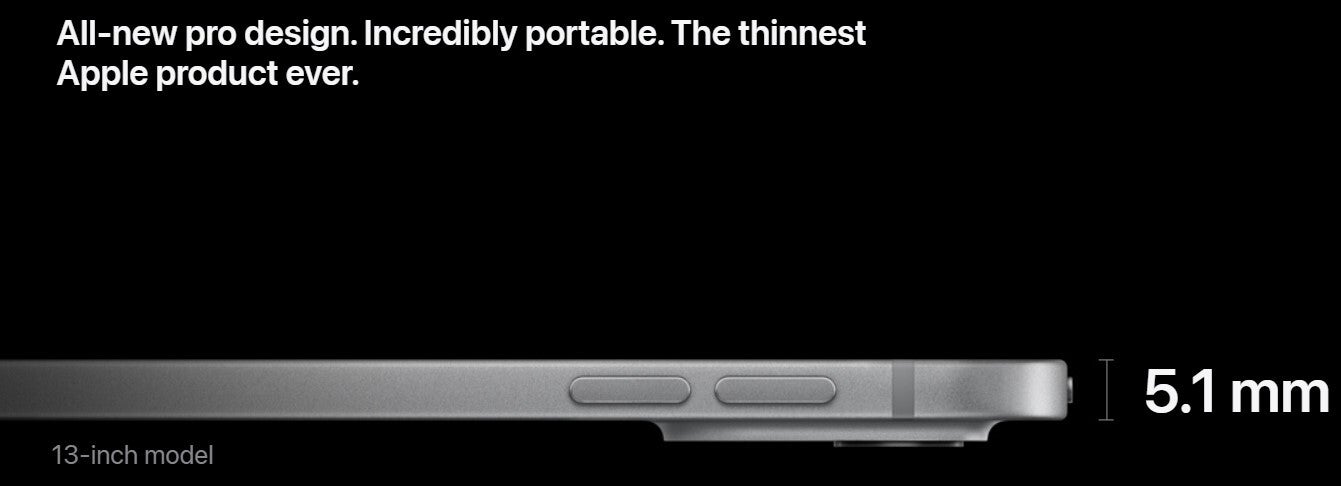Disclaimer: Content Source The content on this website is for informational purposes only. We would like to clarify that the information provided here is sourced from various publicly available outlets on the internet. None of the content on this website is authored, reviewed, or endorsed by our team.
Apple finally released a new tablet, and what a slate the iPad Pro (2024) is! The
and its 11-inch brethren are the first Apple tablets to come with big and bright OLED displays, after almost a decade of using quality IPS screens for the Professional series.
Announcing a tablet with OLED display is not unprecedented in itself, but the way Apple approached the task screams Cupertino. It went to the only OLED display maker that can craft the so-called tandem technology in big numbers – LG – and worked with it to create a dual-stack OLED panels for the 2024 iPad Pro series.
The two layers of organic diodes in tandem OLED displays means that each layer’s separate virtues add up. The top layer is almost transparent, allowing the cumulative luminance of both organic emitting diodes to pass through and shine towards the user’s eyes when doodling outside on a bright, sunny day.

While in phones like the Honor 6 Ultimate, the only one with dual-stack OLED panel – this could mean announced peak brightness level of 5,000 nits, Apple is much more realistic in its measurements and “only” cites 1000 nits of typical and 1600 peak display brightness when showing XDR content.
This is still nearly double than the 600 nits of typical brightness that Apple advertises for the 2022 iPad Pro, just as expected from a tandem OLED display, so what gives? Well, the record 4,500-5,000 nits peak brightness numbers that some Chinese phone makers announce, are measured at 1% average picture level (APL) or below.
While the jury is still out on the Honor 6 Ultimate typical everyday luminance, Apple managed to effectively double the iPad Pro (2024) display brightness with the use of dual-stack OLED display:
The Ultra Retina XDR display delivers extraordinary full-screen brightness and unparalleled precision built on breakthrough tandem OLED technology. The combined light of two OLED panels generates amazing brightness and extreme dynamic range performance.
Color and Contrast
Another standout feature of OLED displays is their high contrast ratio. Since the organic diodes themselves emit light, as the OLED abbreviation suggests, they are simply on or off when displaying content.
This means that the contrast level is practically infinite, but Apple loves them flashy numbers, so it now goes with the blurb of a “2,000,000:1 contrast ratio” in its iPad Pro (2024) specs sheet, just to make it sound as impressive as its iPhone OLED displays.
The contrast ratio “delivers deeper blacks for extreme dynamic range,” says Apple, while waxing poetic about “pinpoint brightness in the stars and incredible detail in low light and shadows.”
As usual, its per-unit display calibration, as well as the typical fast response rate of OLED screens are contributing to make the display on the 2024 iPad Pro one of the most remarkable out there:
The color and luminance of each pixel is controlled down to the submillisecond, enabling next‑level XDR performance. The Ultra Retina XDR display is even more responsive to content in motion. Precision specular highlights convey more true-to-life details and accurate reflections of light in every image. So breathtaking HDR landscapes, textures, and tones feel even more vibrant and realistic.
Thinnest Apple device

The thinnest Apple product ever? Why, the 2024 iPad Pro
Apple advertises the 2024 iPad Pro line as “Thinpossible.” The sheer fact that it chose this slogan to emphasize one of the virtues of its first tablet with OLED display is very telling.
Dual-stack or not, OLED panels don’t need a backlight like the IPS screens that Apple has used for its iPad tablets since their inception way back in 2010. Fully laminated, the iPad Pro (2024) tandem OLED display is extremely svelte, leading to a 0.21 inch (5.3 mm) thin iPad Pro 11-inch and the incredible 0.20 inch (5.1 mm) thin iPad Pro 13-inch.
In fact, the 2024 iPad Pro is the thinnest device that Apple has ever crafted, despite that it carries a screen digitizer for the new Apple Pencil, and the largish battery, a very impressive achievement indeed.
Battery life
Speaking of battery, the news is somewhat disappointing. Tandem OLED displays like the Ultra Retina XDR screen of Apple can lead to 30% reduction in power draw. The two organic diode layers don’t need the maximum current coursing through the display adapter to hit their peak performance, as the gains are cumulative.
Apple, however, may have opted for said peak performance, or simply placed a smaller battery in the iPad Pro (2024) models to save on production costs, as it advertises absolutely the same battery life as before.
Lifespan
Last but not least, even though Apple doesn’t need it for the iPad Pro (2024) is the ability of its tandem OLED display to outlast the useful life of its processor. Instead of going with quirky chemistry to expand the notoriously short life of blue diodes in OLED screens, tandem panels can quadruple the typical display longevity simply because of their dual-stack nature.
The longevity of dual-stack OLED screens is more than a decade, during which the dreaded burn-in or paling phenomenon of the blue diodes is guaranteed not to appear, unlike the current single-stack OLEDs on most phones. Phones are usually not used for 10 years, though, so the tandem OLED method was developed for devices with much longer life cycles, like tablets, laptops, monitors, and even cars like the Mercedes EQS whose Hyperscreen is exactly a dual-stack panel provided by LG.

In short, Apple usually manages to revive its iPad sales with each passing professional generation.
The 2024 iPad Pro may not be an exception, seeing that the Ultra Retina XDR screen is indeed “the world’s most advanced display,” as Apple advertises, seemingly unaware of the Mercedes Hyperscreen.





